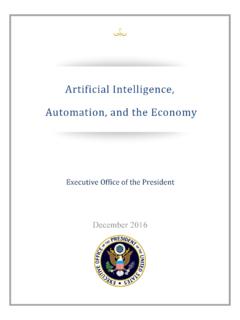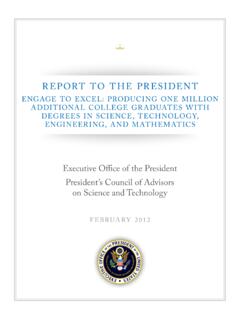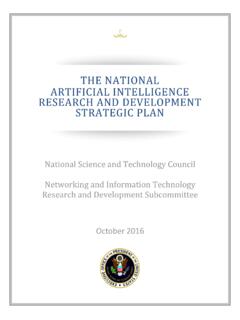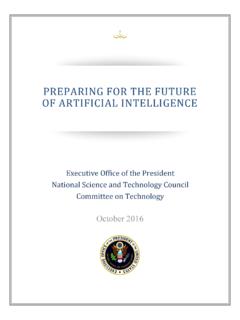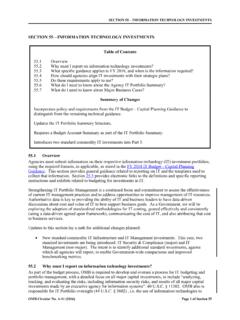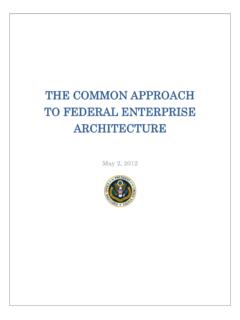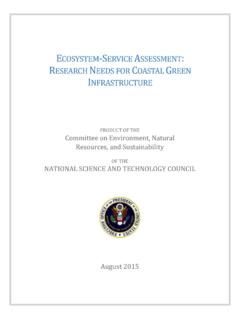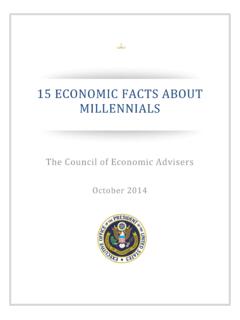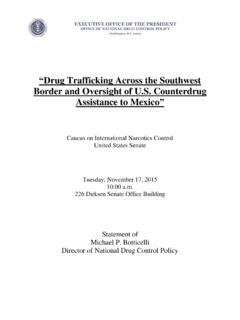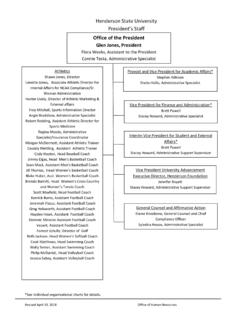Transcription of Executive Office of the President - The White House
1 THE President S CLIMATE ACTION PLAN Executive Offi ce of the President June 2013 2 Table of Conte nts CUT CARBON POLLUTION IN AMERICA .. 6 I. Deploying Clean Energy .. 6 Cutting Carbon Pollution from Power Pla nts .. 6 Promoting American Leadership in Renewable .. 6 Unlocking Long Term Investment in Clean Energy Innovation .. 7 II. Buildi ng a 21st Century Transportation Sector .. 8 Increasing Fuel Economy Standards .. 8 Developing and Deploying Advanced Transportation Technologies.
2 8 III. Cutting Energy Waste in Homes, Businesses, and Factories .. 9 Reducing Energy Bill s for American Families and Businesses .. 9 IV. Reducing Other Greenhouse Gas Emissions .. 10 Curbing Emissions of Hydrofluorocarbons .. 10 Reducing Methane Emissions .. 10 Preserving the Role of Forests in Mitigating Climate Change .. 11 V. Leading at the Federal Level .. 11 Leading in Clean .. 11 PREPARE THE UNITED STATES FOR THE IMPACTS OF CLIMATE CHANGE .. 12 I. Building Stronger and Safer Communities and Infr astructure .. 12 Directing Agencies to Support Climate Resilient Investment.
3 12 Establishing a State, Local, and Tribal Leaders Task Force on Climate Preparedness .. 13 Supporting Communities as they Prepare for Climate Impacts .. 13 Boosting the Resilience of Buildings and .. 13 Rebuilding and Learning from Hurricane Sandy .. 13 II. Protecting our Economy and Natural Resources .. 14 Identifying Vulnerabilities of Key Sectors to Climate Change .. 14 Promoting Resilience in the Health Sector .. 14 Promoting Insurance Leadership for Climate Safety .. 14 Conserving Land and Water Resources .. 15 Maintaining Agricultural Sustainability.
4 15 Managing Drought .. 15 Reducing Wild fire Risks .. 15 Preparing for Future Flo ods .. 15 III. Using Sound Science to Manage Climate Impacts .. 16 3 Developing Actionable Climate Science .. 16 Assessing Climate Change Impacts in the United States .. 16 Launching a Climate Data Initiative .. 16 Providing a Toolkit for Climate Resilience:.. 16 LEAD INTERNATIONAL EFFORTS TO ADDRESS GLOBAL CLIMATE .. 17 I. Working with Other Countries to Take Action to Address Climate Change .. 17 Enhancing Multilateral Engagement with Major Economies.
5 17 Expanding Bilateral Cooperation with Major Emerging Economies .. 17 Combatting Short Lived Climate Pollutants .. 17 Reducing Emissions fr om Deforestation and Forest Degradation .. 18 Expanding Clean Energy Use and Cut Energy Waste .. 18 Negotiating Global Free Trade in Environmental Goods and Services .. 19 Phasing Out Subsidies that Encourage Wasteful Consumption of Fossil Fuels .. 20 Leading Global Sector Public Financing Towards Cl eaner Energy .. 20 Strengthening Global Resilience to Climate Change .. 20 Mobilizing Climate Finance.
6 20 II. Leading Eff orts to Address Climate Change through International Negotiations .. 21 4 President OBAMA S C LIMATE ACTION PLAN We, the people, still believe that our obligations as Americans are not just to ourselves, but to all posterit y. We w ill respond to the threat of climate c hange, k nowing that the failure to do so would betray our children and future gene rations. Some may still deny the overwhe lming judgment of science, but none c an avoid the d evastating impact of raging fires and crippling drought and more powerful storms.
7 The path towards sustainable e ne rgy sources will be long and sometimes difficult. But America cannot resist this transition, we must lead it. We c annot cede to other nations the t echnology that will power new jobs and ne w industries, we must claim its promise. That s how w e w ill maintain our economic v itality and our national treasure - - our forests and waterways, our croplands and snow-capped peaks. That is how w e w ill preserve our planet, commanded to our care by God. That s what will lend meaning to the c reed our fathers once declared. -- President Obama, Second Inaugural Address, January 2013 THE CASE F OR ACTION While no single st ep can reverse the effects of c limate c ha nge, we have a moral obligation to future generations to leave them a plane t that is not polluted and damaged.
8 Through steady, responsible action to cut carbon pollution, we c an pr otect our children s health and begin to slow the effects of c limate cha ng e so that we l eave b ehi nd a c leaner, mor e st abl e environment. In 2009, President Obama made a pledge that by 2020, America would reduce its greenhouse gas emissions in the range of 17 percent below 2005 leve ls if a ll other major economies agreed to limit their e missions as well. Today, the P resident remains firmly committed to that goa l a nd to building on the progress of his first term to help put us and the world on a sustainable long-term trajectory.
9 Thanks in part to the Administration s success in doubling America s use of wind, solar, a nd geothermal e nergy and in establishing the toughest fue l e conomy st andards in our history, we a re c reating new jobs, building new industries, and reducing dang erous carbon pollution which contributes to climate c ha nge. In fact, last year, c arbon emissions from the ene rgy sector fell to the lowest leve l in two decades. At the s ame t ime, while there is more w ork to do, we are more e ne rgy s ecur e than at a ny time in recent history. In 2012, America s net oil imports fell to the lowest leve l in 20 years and we ha ve become the w orld s leading producer of na tural gas the c leanest-burning fossil fue l.
10 While this pr og ress is enc ouraging, climate change is no longer a distant threat we are already feeling its impacts across the country and the world. Last year was the warmest year ever in the contiguous United States and about one-third of a ll Americans experienc ed 10 days or mor e o f 100-de gree heat. The 12 hottest years on record have a ll come in the l ast 15 years. Asthma rates ha ve doubled in the past 30 years and our children will suffer more a sthma a ttacks as air pollution gets worse. And increasing floods, heat wave s, and droughts have put farmers out of business, which is already r aising food prices dramatically.
